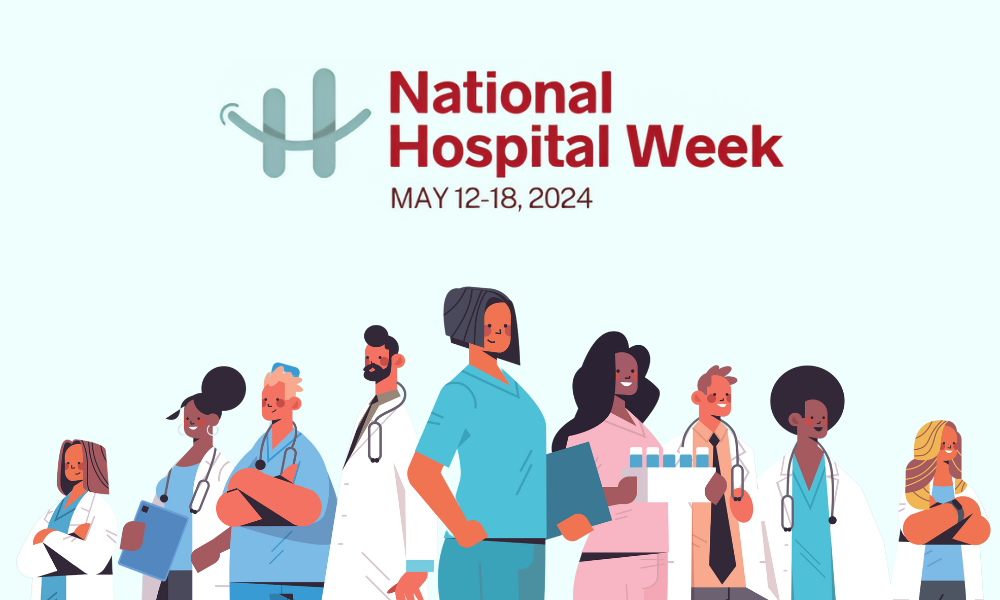Maximizing Locum Clinician Revenue By Staying Ahead of The Enrollment Game
(From LocumTenens.com 5/4/2023)
Healthcare systems can and should do more to maximize revenue from locum tenens clinicians. A bunch of money is getting left on the table, according to a report from LocumTenens.com, and the big reason is that hospitals and private practices don’t have an adequate understanding of clinician enrollment.
LT’s report says the cost of the average new patient and outpatient revenue for a physician is more than $2.3 million annually. Using a base of $11,660 in billings each day, a seven-day delay in enrollment adds up to more than $81,000 in lost revenue. Fast forward to two months down the road, and it balloons to nearly $700,000.
There are two different ways hospital and medical practices typically enroll their locum tenens physicians, the report says, and this is where the misunderstanding is happening.
First, there’s the Q6 Modifier, which is the quickest route to temporary enrollment. This has been used historically in locum tenens assignments. It’s a billing code that allows for the temporary use of a locum tenens provider under the permanent provider’s National Provider Identifier (NPI) for up to 60 days. It enables billing for services without requiring additional enrollment as long as the permanent provider is unable to provide services and the locum provider does not exceed a 90-day absence.
On the other hand, Full Enrollment refers to enrolling a locum provider as an individual within a group, allowing direct billing under their National Provider Identifier (NPI), and removing the locum tenens label from an enrollment perspective. This gives additional flexibility to healthcare facilities, and there are “no limitations on how long you can bill for the provider,” which makes this an ideal long-term solution.
The locum tenens industry has traditionally relied on the Q6 modifier for billing, but with the rise of advanced practice providers and the need for additional coverage, the industry needs to try whatever methods are available to ensure effective billing.
One solution is for providers to partner with a locum tenens staffing service. The service can step in to maximize revenue for hospitals and medical practices while staying ahead of the enrollment game.
The enrollment process is complex, and there are many obstacles that hinder hospitals and medical practices from receiving proper reimbursement for locum tenens providers. Staffing services need to stay on the ball and remove those barriers to ensure they get the full reimbursement.
La Vida Locum
What to Consider When Filling Employment Gaps with Locums
(From Health Carousel Locum Tenens 3/8/2023)
Healthcare systems rely increasingly on locum tenens physicians because there’s a widespread physician shortage. We’ve written more times than we can count about this staffing issue in the past year and the worst-case scenario of a net-negative 37,000 and 124,000 physicians by 2034.
Locum tenens providers give hospitals an option to fill those absences and maintain a high level of care. But utilizing locum tenens for a short period opens up organizations to legal and regulatory risk management questions.
Facilities need to get in front of regulatory and risk management issues by:
- Making sure locum tenens providers are covered under your malpractice policy
- Hiring a locum tenens provider with the same specialty as the one you’re replacing.
- Creating efficient orientation methods
- Verifying licensing, credentials of providers, and maintaining documentation
- Understanding full compliance with the DEA
You can streamline all of these factors by maintaining a provider checklist – having a structure in place helps make sure your locum tenens provider succeeds in their new placement.
Hiring locums tenens providers isn’t always a straightforward process, and utilizing locum tenens for even a short period can open your organization to certain legal and regulatory risk management questions. Getting in front of these concerns can help healthcare organizations effectively manage liabilities when hiring locum tenens physicians.
The Most In-Demand Locum Tenens Specialties in 2023
(From Vista Staffing 5/2/2023)
Locum tenens providers help healthcare facilities meet increasing demands. According to Vista Staffing, here are the positions that have been in the highest demand so far in 2023:
1. Anesthesia Providers: Anesthesia providers, including anesthesiologists and certified registered nurse anesthetists (CRNAs), are in high demand because:
- There is a shortage of these professionals in outpatient surgical centers, hospitals, and pain management programs.
- Patient safety is a top priority for health systems. This expertise and experience are highly sought after to ensure patient safety and comfort during surgical procedures.
2. Hospitalists: The demand for hospitalists is on the rise because of their ability to provide comprehensive care for acute and chronic conditions within hospital settings. Hospitalists play a crucial role in managing patients’ medical needs during their hospital stay, and they also help by:
- Coordinating patient treatment plans
- Collaborating with other specialists involved in the patient’s care. The rotating shifts of hospitalists allow for continuous coverage and better patient outcomes.
3. Psychiatrists: COVID-19 has impacted global mental health, leading to an unprecedented demand for locum tenens psychiatrists. Locum tenens psychiatrists are highly sought after because:
- They possess the skills and expertise to address the growing mental health needs in diverse settings.
- They can work anywhere – hospitals, clinics, and private practices to provide quality diagnosis, treatment, therapy, and medication management, to individuals suffering from mental health conditions.
Locum tenens providers bring a level of expertise in response to complex cases in areas with specific skill gaps. These providers can quickly adapt to different practice settings and deliver quality care, so vital services don’t get interrupted.
Locum Leaders
All Star Healthcare Solutions Gets Top Workplace Honor
(From Yahoo! Finance 5/9/2023)
All Star Healthcare Solutions was recently recognized as the No. 4 company in the midsize category at the Sun Sentinel’s “2023 Top Workplaces in South Florida” awards ceremony.
All Star says they received this designation because they prioritize creating a supportive workplace for employees, and they do this by investing in comprehensive benefits, work-life balance, and career development. The Sun Sentinel compiled results from an anonymous online survey where respondents evaluated employee engagement, satisfaction, and commitment to creating a caring workplace.
All Star CEO Keith Shattuck said his employees’ dedication to delivering exceptional service and making a positive impact on providers, clients, and patients was “extremely rewarding.”
Jackson Healthcare, AMN Healthcare Celebrate New Leadership
(From Jackson Healthcare & AMN Healthcare)
Brad Chason was recently promoted to senior vice president of information technology at Jackson Healthcare. As the head of the organization’s tech group, Chason oversees the strategic vision, direction, and delivery of technology initiatives throughout the company.
Chason has more than 20 years of technology leadership experience and brings a wealth of expertise in team-building, operations, and creating effective technology solutions.
AMN Healthcare recently made two executive leadership appointments.
Meredith Lapointe, previously a partner at McKinsey & Company specializing in healthcare workforce optimization, has been appointed chief business officer. Lapointe will be responsible for the company’s corporate growth strategy, client management, and marketing. She brings extensive knowledge of healthcare workforce dynamics and is highly skilled in strategy development and operational improvement.
Patrick McCall, a seasoned sales executive with experience at People2.0 and Randstad Group, has been named chief growth officer. McCall will oversee enterprise sales and implementation functions, ensuring a client-centric approach and alignment across AMN Healthcare businesses. With his expertise in building sales organizations and driving growth acceleration, McCall is poised to enhance the company’s sales capabilities.
Hire Power
Telehealth Toolkit: Guide Providers Through New Telehealth Territory
(From CHG Healthcare 5/15/2023)
A recent study showed that 69% of patients prefer telehealth to the in-person doctor visit. It’s easy to see why. Patients find it quick, convenient, and cost-effective–not having to drive back and forth from doctor visits, pay for parking, childcare, etc. While convenient for patients, it’s not as easy for providers and healthcare facilities.
CHG Healthcare broke down some of the key components of new healthcare rules and regulations and packaged them together in a toolkit for easy access for providers and facilities (if you’ve made it this far, go ahead and bookmark that link). CHG summed up the priorities for telehealth providers in 2023 as such:
- Preparing providers so they can work in telehealth.
- Making sure the right people are reimbursed for the care they provide.
- How to properly bill patients for a telehealth visit.
- New technology that makes the process easier.
- How locum tenens providers fit into the mix.
Some key takeaways: In most cases, federal and state laws require providers delivering care to be licensed in the state they are delivering care and where the patient is located, which becomes an issue of licensing and credentialing. In addition to that, the reimbursement rates for telehealth services can vary by the payor. There’s also been significant growth in the telehealth tech space, which can be integrated into most electronic health record (EHR) systems.
Locum tenens providers and a big appeal to the industry as a whole is its ability to take on new challenges and be flexible. That’s what they’re going to have to do as telehealth is not going away anytime soon.
EHR Toolkit: Reducing Your Documentation Burden
(From Healthcare Innovation 5/15/2023)
The American Medical Informatics Association (AMIA) 25×5 Task Force developed an EHR Toolkit to guide organizations in reducing their “clinical documentation burden.” This burden on providers and facilities can result in errors and less time for providers to have meaningful patient interactions.
And if providers are spending so much of their time on these administrative tasks, naturally, that has the potential to leave them dissatisfied and burnt out. AMIA was tasked with this ambitious–to say the least–task of reducing the “clinical documentation burden in EHRs by 25% by 2025.”
The task force conducted a literature search and national survey, uncovering 30+ organizations that shared strategies to reduce the documentation burden. These included standardized note templates, streamlining requirements, and the crucial role of EHR vendors in minimizing duplication and supporting team-based care.
Future steps include building an online learning community to share initiatives and different strategies for providers to help reduce the documentation burden.
NALTO/Butler Street Address ‘Pesky Client Objections’ in Webinar
(From NALTO/Butler Street, 5/16/2023)
In a recent NALTO/Butler Street webinar titled “How to Handle Pesky Client Objections,” Butler Street talked about the significance of objections in client relationships. The speaker, Erika Messenger Bentz, senior consultant at Butler Street, spoke about how these objections typically arise from “skepticism and a lack of rapport,” emphasizing the need to build strong connections.
Bentz said that skepticism can come from poor questions or answers, and this is where those objections typically occur. Skepticism can also come from moving way too fast from topic to topic without taking the time to clarify any details and answer questions before moving forward. This can be off-putting to a client. The remedy for this is to ask open-ended questions to help develop a rapport and healthy back-and-forth with this client.
Bentz added that sometimes providers also make “grand promises,” which can also fuel the fire of skepticism. Providers should instead make a habit of addressing patient concerns, and seeing their objections as opportunities to help them better understand.
Bentz also shared using the LAER approach (Listen, Acknowledge, Explore, Respond) to effectively manage objections, foster trust, and meet client needs. Bentz said that if you can listen effectively and acknowledge a client’s concerns by repeating those concerns back to them in your own words, you will get a better overall understanding of their reality. This helps you empathize with a client and then respond to them with a list of options that best suits their specific needs.
Butler Street will host its next Webinar on June 15 called, “Advance Relationships with the Right Questions,” on June 15 at 2 p.m. (ET), which will focus on referrals and building trust.
Making the Rounds
Positive Patient Feedback Can Increase Clinicians’ Job Satisfaction
(From MedCity News 5/2/23)
Feedtrail, a Raleigh-based healthcare software company, has released a new messaging program for patients who want to provide feedback to clinicians. They think this can help mitigate the healthcare burnout crisis. This is based on the premise that if healthcare workers receive more positive feedback they’ll be more satisfied in their roles, and if they are more satisfied in their roles they won’t be so inclined to quit the job.
Feedtrail’s premise has been backed by their research. The company recently announced the results of a five-month clinician retention workgroup, which found 77% of clinicians agreed that consistently receiving positive messages “reinforced their purpose.”
The workgroup, which ran from December to April, included four providers: Cedars-Sinai, Huntington Hospital, Texas Tech Physicians, and FirstHealth of the Carolinas. Almost 800 frontline clinicians in settings plagued by worker fatigue received positive patient feedback through Feedtrail’s platform.
There are various initiatives health systems can adopt to reinforce their staff members positively. Like, sending out weekly newsletters highlighting positive praise individuals received throughout the week. Department leadership can also kick off team meetings by reading aloud received kudos and displaying positive messages in public areas.
Socially Speaking
From LinkedIn
From Twitter
From Facebook
Second Opinion
Physicians Show An Increased Interest in Working Part-Time
(From Becker’s Hospital Review 5/10/23)
A report from Medscape says the number of part-time physicians in the United States is increasing. Over the past two decades, the number of part-time physicians has fluctuated. Initially, part-time physicians were “mostly men approaching retirement or women at different stages of their careers,” but those demographics are changing. Hospitals now offer more part-time or per diem work options, and specialists are increasingly taking on part-time roles.
The shift toward part-time work is noticeable across various medical fields. In 2002, 15% of pediatricians reported working part-time hours, but in 2021, a survey found that 30% of graduating pediatricians were seeking part-time positions. This trend extends to primary care, behavioral health, outpatient specialties like endocrinology, and inpatient roles such as radiology, critical care, and emergency medicine.
Many early-career physicians are opting for reduced hours to create a better work-life balance. However, there are concerns that the rise in part-time roles may contribute to the physician shortage. If a significant number of physicians reduce their clinical hours, it could result in reduced access to care in the community.
Some argue that part-time work helps retain physicians in the field for a longer duration, promoting sustainability and overall well-being, and that by allowing physicians to have more manageable workloads, they can continue practicing medicine without reaching their limits and maintain a fulfilling personal life.
The High Cost of Healthcare Burnout
(From Curative 5/15/23)
Physician burnout is a pressing issue in healthcare, with significant consequences for professionals and institutions. The 2023 Doximity and Curative Physician Compensation Report revealed 86% of physicians felt overworked, and two-thirds are considering changing employers due to burnout. Hospitals face substantial financial costs from the turnover that this could cause, estimated at $4.6 billion annually in the US alone.
The cost of replacing a single physician can range between $800,000 and $1.3 million in recruitment, productivity, and training costs. Burnout also leads to decreased productivity and efficiency, increased medical errors, and malpractice risks. Patients treated by burned-out physicians report lower satisfaction with their care, impacting a hospital’s bottom line.
To address physician burnout, hospitals can implement practical solutions. Flexible work schedules give physicians more control over their hours, promoting a healthy work-life balance. Streamlining administrative tasks through technology solutions and additional support staff can alleviate the burden on physicians. Creating a supportive work environment fosters teamwork, collaboration, and open communication and can reduce burnout rates.
Hiring locum tenens physicians can offer full-time staff the opportunity for breaks, reduced hours, or sabbaticals, promoting work-life balance and retaining talented physicians. By addressing the root causes of physician burnout, healthcare institutions can improve patient care, reduce costs, and create a sustainable and supportive work environment for medical professionals.








